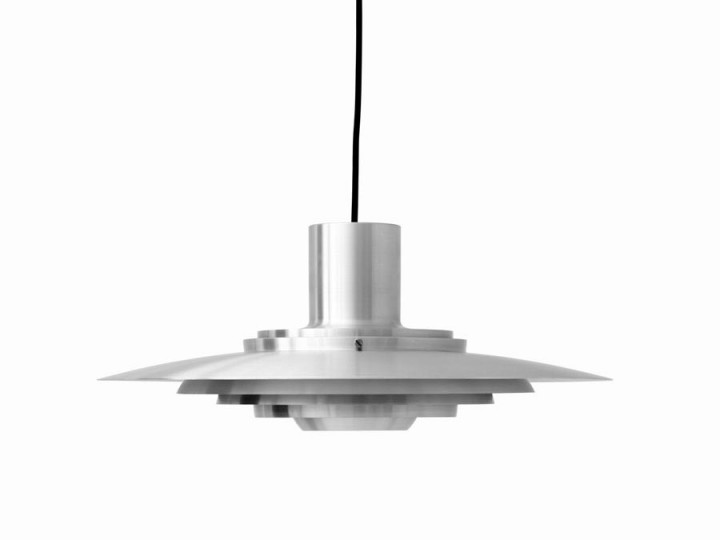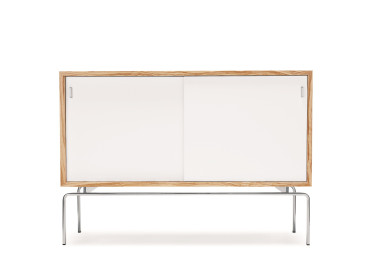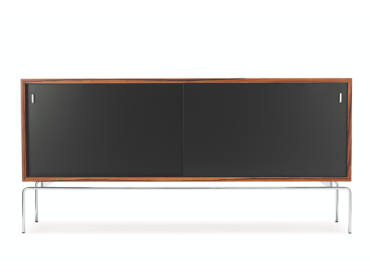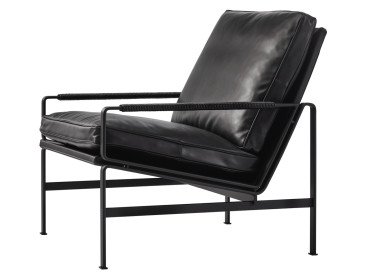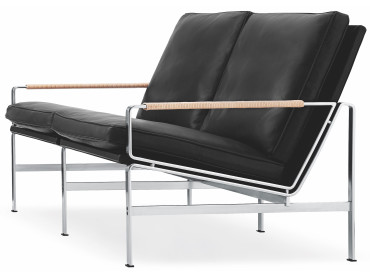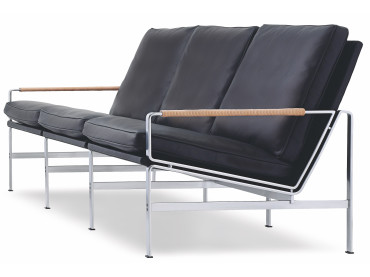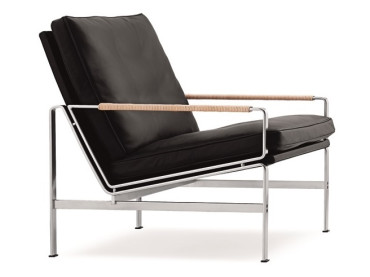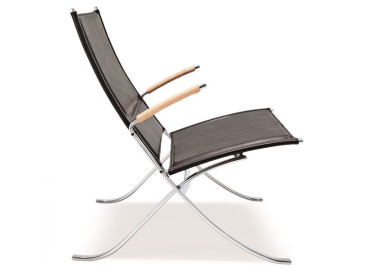Mid-Century modern scandinavian pendant lamp P376 KF1, Ø 47,5cm. New edition
-
Fabricius & Kastholm
-
And Tradition
- AT001 2/3 weeks
Mid-Century modern scandinavian pendant lamp P376 KF1, Ø 47,5cm. New edition, by Preben Fabricius for And Tradition. Jørgen Kastholm (1931-2007) and Preben Juhl Fabricius (1931-1984) were driven by a mutual mission to make form a pure derivative of function. Both were architects, graduating from the Danish School of Interior Design where they studied under Finn Juhl and subsequently with Arne Jacobsen. The P376 pendant lamp is a perfect example of Kastholm & Fabricius’ subtle architectural slant on design. Originally conceived in 1963, five concentric shades create gradations of curves towards the middle of the lamp to emit a soft, diffused light. The discrete placement of the shades and the silky aluminium finish culminate in a cohesive expression that’s both iconic and enthralling.
Available in 2 dimesions and finishes : matt white or aluminium.
| Year | 1963 |
| Dimensions | Ø: 47.5cm/18.7in, H: 19cm/7.5in. Weight 3.70 kg. Voltage220-240V 50HZ. Light source & energy efficiency classE27 Max. 100W. Cord length400cm / 236.2in |
| Material | Lacquered metal & fabric cord. ColoursMatt white, Aluminium |
| Style | Classique Neuf |
| Origin | Denmark |
| Fournisseur | And Tradition |
Fabricius & Kastholm
The two Danish designers, Preben Juhl Fabricius (1931–1984) and Jørgen Kastholm (1931–2007), first met at the School of Interior Design, where they both studied during the 1950s.
It was only after each had gained professional experience abroad that they reunited in 1960, discovering a shared design philosophy centered on Perfection, Aesthetics, and Minimization.
In 1961, they decided to join forces and founded their own architectural studio. Fabricius, trained as a cabinetmaker, combined his craftsmanship with Kastholm’s background as a blacksmith—making steel the natural and defining material in their work.
Although both designers created remarkable pieces individually, their greatest achievements came from their collaboration. Over eight years of partnership, they developed an extensive range of high-quality designs characterized by minimalism and functionality, often using steel, glass, and leather.
Since 2006, Lange Production has held the exclusive rights to manufacture a selection of Fabricius & Kastholm’s designs. The furniture continues to be produced at the original factory, using the same tools and methods as in the 1960s. This production is carried out in close collaboration with Jørgen Kastholm, ensuring the authenticity and exceptional quality of these timeless classics.

